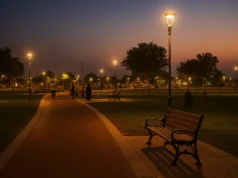The Very Best Historical Sites in Agra for Tourists
Located on the banks of the Yamuna River in the state of Uttar Pradesh, Agra is one of India’s most historically rich cities. Internationally recognized as the home of the Taj Mahal, Agra attracts millions of visitors each year who want to witness the city’s historic Mughal-era heritage. There are many other magnificent monuments in Agra beyond the Taj Mahal. For the tourist who would like to explore history, Agra has a treasure of options.
Taj Mahal
The Taj Mahal is the crown jewel of Agra and one of the Seven Wonders of the World. Built by Emperor Shah Jahan in the 17th century in memory of his beloved wife Mumtaz Mahal, this white marble mausoleum represents eternal love. It has perfect symmetry, beautiful marble inlay work, and the ability to change colors with the light all justify its position as one of the most beautiful historical sites in the world. Every visitor that comes to Agra starts their journey here – mesmerized by the breathtaking beauty of the Taj Mahal.
Agra Fort
Another historical site you have to visit is Agra Fort which is a UNESCO World Heritage Site. The Fort was largely built by Emperor Akbar in the 16th century and it was the main residence of the emperors of the Mughal dynasty for generations. Within the fort, tourists can visit a number of palaces, audience halls and gardens, including Jahangir Palace, Diwan-i-Am (Hall of Public Audience), and Diwan-i-Khas (Hall of Private Audience). Not only is the fort a testament to Mughal architectural brilliance, but also the views of Taj Mahal from the balconies are fantastic, making it an ideal place for any budding photographer.
Fatehpur Sikri
Just a short drive from Agra is Fatehpur Sikri, also a UNESCO World Heritage Site. This city was built by Akbar and it was once the Mughal capital, but it was abandoned! It was abandoned because of scarcity of water! The town today is frozen in time for tourists to view and offers a great lesson in Mughal urban planning. The fort includes the Buland Darwaza (the world’s largest gateway), Jama Masjid, Panch Mahal and the tomb of the Sufi saint, Salim Chishti, which still attracts devotees from across India.
Tomb of Itimad-ud-Daulah
If you love Mughal art and Persian influence, then, consider visiting Tomb of Itimad-ud-Daulah, also known as the “Baby Taj”. The mausoleum was commissioned by Nur Jahan, the wife of Emperor Jahangir, and is often thought to be a sketch of the Taj Mahal. Built from white marble, the mausoleum has intricate inlay work and represents the change from buildings made of red sandstone to those built from white marble in Mughal architecture. The location of Tomb of Itimad-ud-Daulah is very peaceful so it is very popular for tourists who want quieter experience than the more crowded Taj Mahal.
Mehtab Bagh
Also worth seeing is the Mehtab Bagh, or Moonlight Garden which is located on the northern bank of the Yamuna River directly opposite the Taj Mahal. Mehtab Bagh was originally part of the Taj Complex and provides wonderful views of the Taj, especially at sunset. This is the perfect place for photographers or tourists to admire the Taj Mahal in a unique spot.
Conclusion
Agra has so much more to offer than the Taj Mahal. The grandeur of Agra Fort, the elaborateness of Fatehpur Sikri, the elegance of Itimad-ud-Daulah tomb, and the charm of Mehtab Bagh, completes the experience of meeting India’s Mughal heritage. The historical places that offer more than views, but connections to the histories of love, power, and faith that shaped one of the greatest empires in history.







